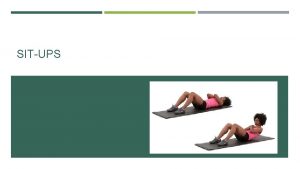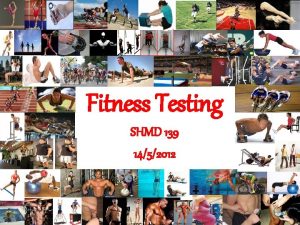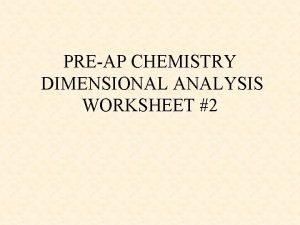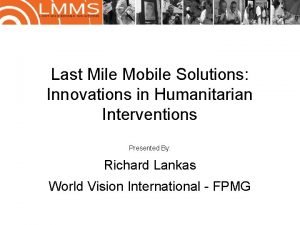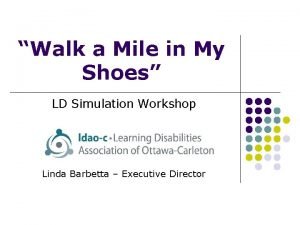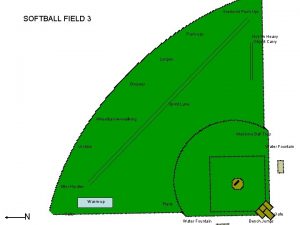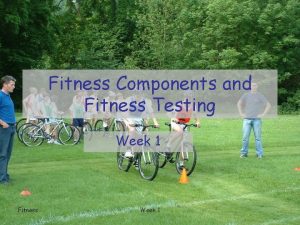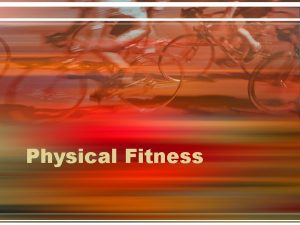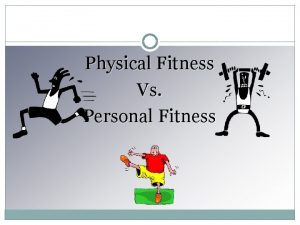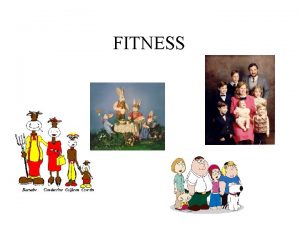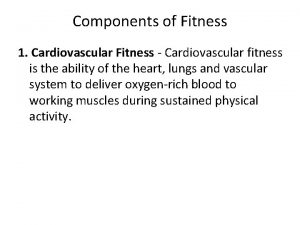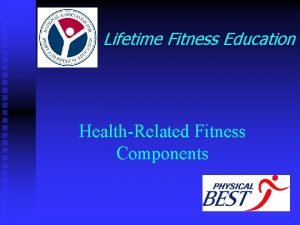Fitness test on Pushups Pullups Situps and Mile












- Slides: 12

Fitness test on Push-ups, Pull-ups Sit-ups, and Mile run. BY: TATE JOHNSON

Purpose & Context of Study ● The overall purpose of this study is to see where the youth stand when it comes to certain fitness test. ● The context of the study is if there is difference between the participants and their health than the test that the program is using will recognize their difference.

Method & Learning Outcomes ● ● The method of the experiment is recording their results by a rubric assessment. After collecting the data from both male and female participants, I have learned that the male participants did better than the female participant in the muscular endurance fitness test. While the female participants did better than the male participants in the cardiovascular test.

Basic Description of Study ● Each participants will perform different pre and post test on different days to see where they stand in the assessment. ● ● The drills consisted of: ○ Pull ups ○ Push ups ○ Sit ups ○ Mile run The participant were recorded on how many times they completed the muscular endurance and the time on the mile run

Instrumentation This is the rubric I will be using to Fitness test pre test measure all the participants performance. Each participants had to fill this out. Pull-ups sit-ups pushs-ups Mile run Day 1 Day 2 Day 3 Day 4

Results & Analysis of Data

Results & Analysis of Data (Cont’d)

Results & Analysis of Data (Cont’d)

Results & Analysis of Data (Cont’d) ● ● Averages for Overall “Pre” ○ Push-ups: 16. 27 ○ Sit-ups: 15. 27 ○ Pull-ups: 4. 60 ○ Mile run: 657. 60 Averages for Overall “Post” ○ Push-ups: 17. 03 ○ Sit-ups: 16. 30 ○ Pull-ups: 5. 00 ○ Mile run 652. 97 ● Overall P-Values ● ○ Push-ups: 0. 002212 ○ Sit-ups: 5. 2929 ○ Push-ups: 5. 88 ○ Pull-ups: 0. 001425 ○ Sit-ups: 5. 51 ○ Mile run: 3. 5101 ○ Pull-ups: 3. 83 ○ Mile run: 129. 53 ○ Standard Deviation from Pre test ○ Push-ups: 6. 60 ○ Sit-ups: 5. 39 ○ Pull-ups: 3. 85 ○ Mile run: 131. 94 Deviation from Post test”

Discussion This experiment was to assessment the participants. It was quite fascinating that both groups were strong in one area and weak in another area. It is still unsure if their were factor to causing this participant to do not as good as we expected them to do. There could have been a lot factor to why some of the participants did not do so well. It could have been the first time these participants perform these activities, especially, the mile run. Others could have had weak upper body strength, or some could have been out of shape. Another factor could be not enough sleep or multiple errors when performing the activities.

Evaluation & Reflection After reviewing the data, it is clear that there is ssignificant evidence between sit-ups, push-ups, pulls-ups when looking at the women and men participants results. It is because some of the P-values were <0. 05. The next steps that I would like to do is expand this experiment to a bigger population of group of participant that subjective to health problems.

References ● García-Pinillos, F. , Roche-Seruendo, L. E. , Delgado-Floody, P. , Jerez Mayorga, D. , & Latorre-Román, P. Á. (2018). Is there any relationship between functional movement and weight status? A study in Spanish schoolage children. Nutricion Hospitalaria, 35(4), 805– 810. ● VLAHOV, E. , BAGHURST, T. M. , & MWAVITA, M. (2014). Preschool Motor Development Predicting High School Health-Related Physical Fitness: A Prospective Study. Perceptual & Motor Skills, 119(1), 279– 291. ● opes, Ví. P. , Maia, J. A. R. , Rodrigues, L. P. , & Malina, R. (2012). Motor coordination, physical activity, and fitness as predictors of longitudinal change in adiposity during childhood. European Journal of Sports Science, 12(4), 384– 391.
